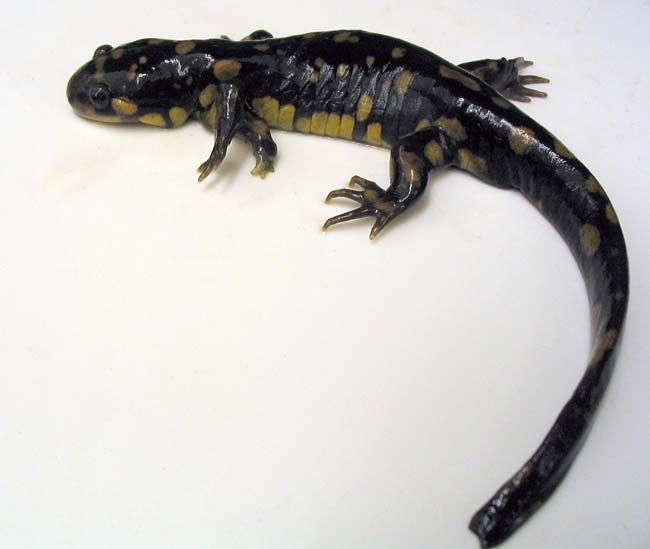Mystery of the 5-Legged Freaks

Oddly high rates of deformation among salamanders, frogs and other amphibians have puzzled scientists in recent years. Possible causes include inbreeding, parasites or pollution that permeates the animals' skin.
The mysterious deformations have included five-legged salamanders, frogs with extra limbs and other amphibians born so messed up that they can't survive to reproduce. In at least some cases, frog deformities are related to increasing numbers of infections caused by tiny parasites that thrive on nutrient-rich runoff from North American farms, a study last year found.
Now, a study of tiger salamanders concludes inbreeding is not the cause in their case, further pointing to human activity as the culprit in amphibian deformities across the board.
Researchers examined 2,000 adult and juvenile salamanders and found 8 percent had deformities, mainly consisting of missing, extra or dwarfed digits (fingers and toes). That's similar to the rate seen in many frog species, said Purdue University Assistant Professor of Forestry and Natural Resources Rod Williams.
Like many types of amphibians, tiger salamanders return to the same pond throughout their lives to mate. Williams and his former doctoral adviser, lead author Andrew DeWoody, hypothesized that habitat fragmentation or other factors might increase the probability that related salamanders would return to the same spot and mate, meaning more inbreeding and then maybe more deformities.
But their study found animals' genetic backgrounds to be unrelated to deformation rates; deformed salamanders were no more inbred than normal individuals. The population proved to be quite diverse, in fact, with roughly twice as much genetic variation as most land animals, DeWoody said.
"This is really the first study to test — and disprove — the hypothesis that inbreeding is responsible for malformations in salamanders," Williams said. The results were published in the journal Biology Letters.
Sign up for the Live Science daily newsletter now
Get the world’s most fascinating discoveries delivered straight to your inbox.
High rates of amphibian malformation concern scientists because they threaten the survival of certain important species. And as with the alarming and widespread decline of frogs tied to global warming, the plight of amphibians is thought to suggest something about the overall health of the environment.
"Amphibians are a good bio-indicator species — real canaries in the coal mine," Williams said.
The mystery is not yet solved.
"We've crossed out inbreeding as a possibility, an important step forward," DeWoody said, "but there's a lot of work yet to do."
- Freaks of Nature: Vote for the Weirdest
- Gallery: New Amphibian Tree of Life
- The Freakiest Lab Animals
Robert is an independent health and science journalist and writer based in Phoenix, Arizona. He is a former editor-in-chief of Live Science with over 20 years of experience as a reporter and editor. He has worked on websites such as Space.com and Tom's Guide, and is a contributor on Medium, covering how we age and how to optimize the mind and body through time. He has a journalism degree from Humboldt State University in California.












